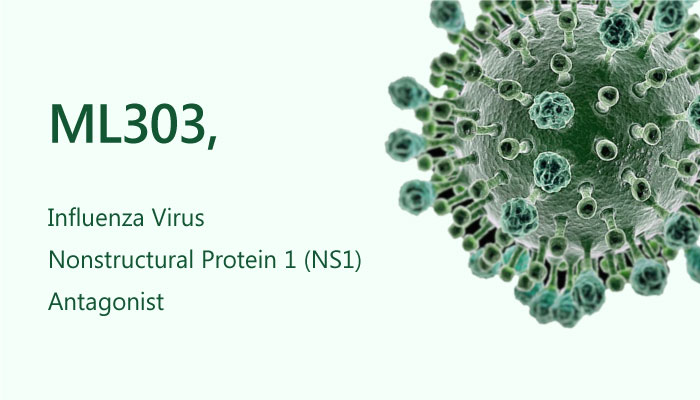In our previous blog “JNJ4796, An Oral Influenza Virus Inhibitor, Mimics the Functionality of bnAbs”, we introduced a novel as an oral active fusion inhibitor of influenza virus, neutralizing influenza A group 1 viruses by inhibiting hemagglutinin (HA)-mediated fusion. Additionally, JNJ4796 mimics the functionality of the broadly neutralizing antibodies (bnAbs). Today, I would like to introduce another compound ML303 that could also treat influenza infection.

Nonstructural protein 1 (NS1) plays a crucial function in the replication, spread, and pathogenesis of influenza virus by inhibiting the host innate immune response. Recently, a study from Samarjit Patnaik, et al reported the discovery and optimization of novel pyrazolopyridine NS1 antagonists. Among which, ML303 is a highly potent Pyrazolopyridine influenza virus nonstructural protein 1 antagonist.
Moreover, in the TCID50 assay, ML303 (compound 32) had an IC90 value of 155 nM. And it was the most potent with a sub-micromolar EC50 value of 0.7 μM for influenza A virus H1N1. However, ML303 and several other compounds were general attenuated towards H3N2 and H5N1. And almost all the compounds were inactive against a common Influenza B strain, B/Brisbane/60/2008.
Then subsequently, the authors evaluated the ability of ML303 and other promising compounds in restoring IFN-β mRNA levels in MDCK cells. As a result, ML303 (20 μM, 6 h) treatment restored IFN-β mRNA levels in MDCK cells infected with A/PR/8/34, at a MOI of 2, for 6 hours. Furthermore, there was no adverse effect observed at single dose of ML303 with dose of 30 mg/kg.
Notably, he reasonable PK profile of ML303 should allow future in vivo experiments to examine NS1 antagonism.